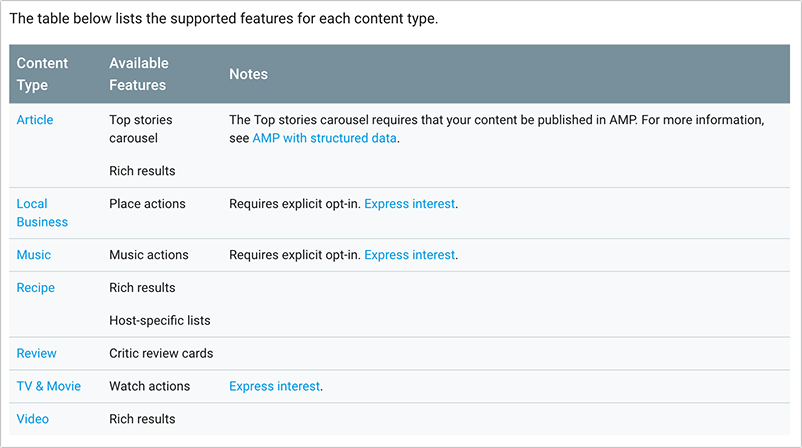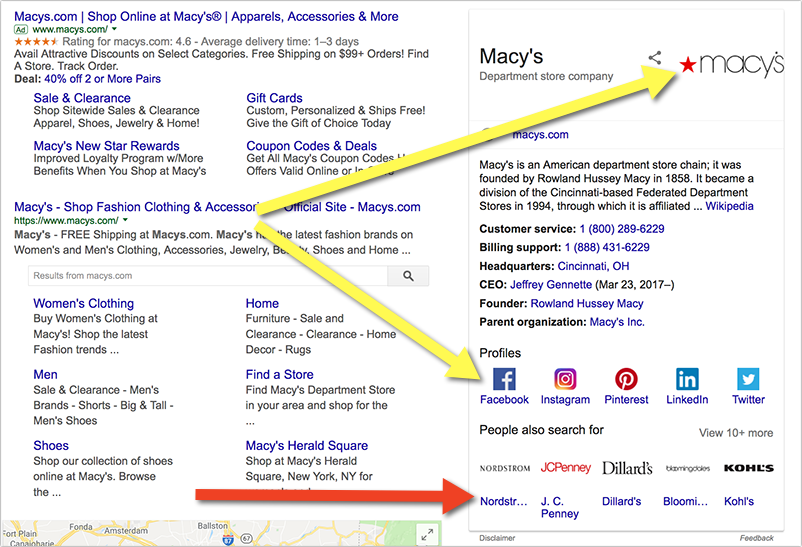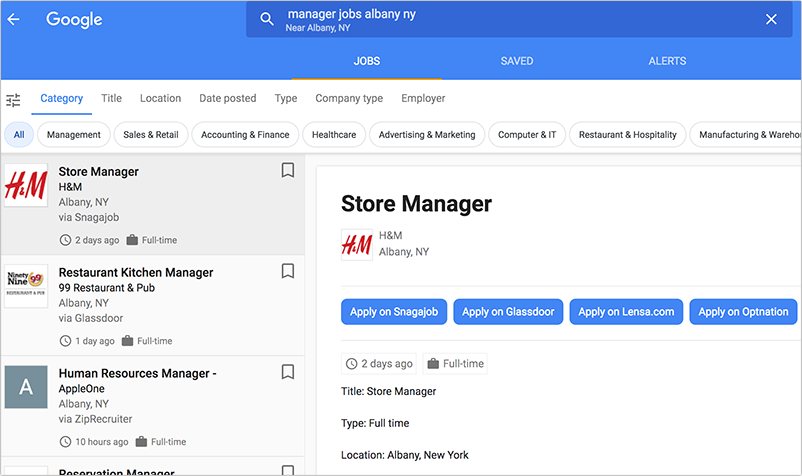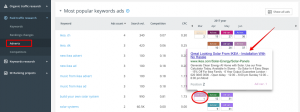Structured data is a way of providing better context for Google, so it can read what is on your page and better understand it. It includes multi-platform supported markup to let you add a lot of important indexable information, often invisible to human users.

Structured data first hit the forefront of our collective minds back in late 2011 when Google, Bing and Yahoo! came together to support the new initiative: a common set of “schemas” for structured data markup on web pages. They got us to listen: Initiatives like that must have meant that they were serious about the markup. When you have competitors coming together to create a new way of search, it isn’t really something you can ignore. Besides, there is little chance you are trying to corner a search engine not on that list above.
Since then there have been tow major conflicting opinions among marketers:
- Google has claimed for ages that websites should be built for people, NOT search engines. Structured markup only helps the machine. Why take the trouble?
- Relying on Google to understand your website is a weak approach. Our job is to adapt a web page for machine understanding. Whatever it takes to help Google understand the web site better, it should be done.
While I understand where the first argument is coming from, I am leaning towards the latter point. After all, our job is to optimize websites for search engines.
It is hard to overestimate the importance of schema enhancements when it comes to Google these days. I have already done a few articles about this, primarily detailing a few ways to finally understand and easily implement Schema.org.
Yet, lack of Google confirmation on the value of adding structured data to the site, lack of understanding of what it is and how to use it properly as well as some vague rumor that it can cause penalty – all of that leaves many website owners dubious… Is it worth the trouble?
Let’s see…
How can structured markup help your online visibility?
1. Improvement in Rankings
Search reps have been shying away from straightforward confirmation for ages: They wouldn’t say it is included into the algorithm.
We do realize that a better understanding of a page should be indirectly contributing to its higher rankings. Plus there are a number of other factors in play here that may bring higher rankings on its own (including higher CTR and increased brand awareness). However having it confirmed would help us convince our clients.
The confirmation came back in 2017. During Pubcon, Gary Illyes from Google went into a bit more detail about how the engine currently ranks web pages. He explained that schema.org is a big part of the modern framework:
If you want your site to feature in searching, use structured data. More importantly, add structured data to pages. It will help us understand your sites better, which ultimately leads to better ranks in some sense because we can rank easier
This was a major surprise to many. It isn’t that we didn’t think structured data was relevant (the popularity of rich snippets was already well known). We just didn’t know how crucial it had all become.
Last month, this point was reiterated during a Reddit AMA with Google’s John Mueller. He said that it is important, it just isn’t the only thing that matters.
“We do use SD to understand a page better,” Mueller told a user asking about schema, “it helps us to rank it better where it’s relevant, but you’re not going to jump to #1 just because you have SD on a page.”
Google has been pretty open the past six months about the fact that schema.org in general matters and that structured data is going to help you out with rankings. Considering they are the engine that most of us are desperate to dominate on, it would serve us well to listen and take heed of their advice. Structured data is now a part of SEO strategy, whether we like it or not. Though given the potential it seems like only good things could come from the change.
2. More Visibility in Search Results, Nicer Search Snippets
In spite of what Illyes and Mueller have said themselves, some debate exists about how useful structured data actually is in rankings. But one thing that has been reported again and again is that click-through rate has increased for sites that have utilized structured markup in their page coding. Considering how easy it is to generate and place this data, that reported CTR is more than enough to make it mandatory.
A few of the actual numbers:
- Dutch car insurance website Independer.nl saw an increase of 28% in SEO CTR from organic search
- LensDirect.com saw a 45% increase in organic click-through
All of the above case studies relate to “reviews” / product rich snippets but there are more supported types to consider:
- Articles
- Recipes
- Video, etc.:

A rich snippet also sets the user intent right: Before even clicking the link, a user knows what to expect.
What is one of the first rules about converting a potential customer? Get them to your site! Lead generation is well and good, but if you are losing them at the sales funnel, or just not managing to keep your retention high, you aren’t doing your job. Any kind of rich snippets is going to draw the eye and give them a reason to pay attention to your link. Sure, that is reliant on placement of that link. But ranking isn’t the only concern here.
Furthermore, structured data helps Google make your search snippet prettier on a smaller scale too: As an example, by using structured data you can prompt Google to show the breadcrumb trail instead of your URL under your snippet:

3. Stronger Search Reputation
A lot of navigational (i.e. here I refer to any search for entities) queries trigger a so-called knowledge graph with brief information on the entity. Businesses have that too and from the first glance it should be good for their reputation, right?
Well, that until you scroll down your brand knowledge graph to see Google inviting your customers to check out your competitors…
This is why it’s so important to work on enhancing your brand knowledge graph. Adding site logo and social media accounts is important and it’s done using Schema.org:

This will also bring more followers to your off-site brand assets.
4. Opportunity to Be Included into Google’s SERPs Tests
Google is continuously working on various features they experiment with in SERPs. Some of them work, others remain experiments. In either case they drive additional exposure from search: Either permanent or short-term (I’ll take both/either!)
In many cases, these experiments rely on rich markup: Remember the “In-Depth Articles” experiment? The earlier adopters of article schema got there first. Google’s Authorship relied on the simplified structured data too. These days they are using rich markup to generate new types of results for job-related searches:

Making your data easier to understand for a search crawler may bring in some opportunities you cannot even foresee yet.
How Do I Add Structured Data to My Page?
Now you know the what and why, so we reach the how. As in: how do I add structured data to my content? I would suggest two tools, both from Google.
First, you have the Structured Data Markup Helper. It provides you with two markup types, website and email. You choose the correct tab, then select the most relevant category. They are as follows:
Website
- Articles
- Local Restaurants
- Businesses
- TV Episodes with Ratings
- Book Reviews
- Movies
- Software Applications
- Events
- Products
- TV Episodes
- Bus Reservations
- Car Rental Reservations
- Event Reservations
- Flight Reservations
- Lodging Reservations
- Orders
- Parcel Delivery
- Restaurant Reservations
- Train Reservations

[Just an example of the impact of rich data embedded into an email message: Gmail automatically imports my reservations from booking.com confirmations into my Google Calendar]
You will be given HTML codes for your chosen structured data markups, which can be added easily to your page or email.
The second tool is the Structured Data Testing Tool. This one is pretty straight forward. You paste in a URL to fetch, or else you put in the snippet of code. It tells you if there are any errors, such as portions of data missing in the code.
Having trouble generating your code? There is a handy little generator. Additionally, there’s no shortage of plugins making it easier for WordPress users. It is an additional way to get the codes you need, though Google’s version is probably your go-to.
Have you seen results using structured data on your site or email marketing campaign? Let us know in the comments!
Structured data is a way of providing better context for Google, so it can read what is on your page and better understand it. It includes multi-platform supported markup to let you add a lot of important indexable information, often invisible to human users. Structured data first hit the forefront of our collective minds […]
The post 5 Reasons to Add Structured Data to Your Site appeared first on Search Engine People Blog.
(123)








